Introduction
Electric Linear Actuators are revolutionizing the way we interact with our furniture. With a powerful combination of elegance and functionality, these devices are not only integral to various industries but have also substantially impacted home automation and furniture design, transforming static pieces into dynamic, multifaceted furniture. This in-depth guide explores the myriad applications of electric linear actuators in furniture and how they are redefining the essence of modern living spaces.
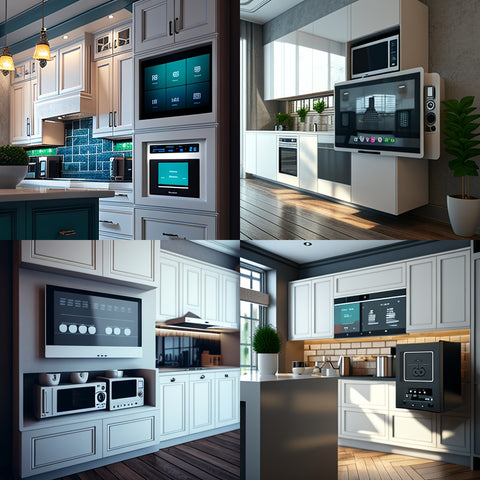
A leading example of actuators in furniture is the use of pop-up TV lifts. These innovative devices solve the age-old issue of space consumption and visual clutter. Embedded within cabinets, FIRGELLI's Super Duty electric linear actuators silently and smoothly elevate the television, offering an optimized viewing experience. These actuators are super quiet and offer high force (up to 450-lbs force), which makes them remarkably efficient for such applications. They can also be used in synchronization for larger applications requiring the lifting of heavier televisions. Integrated with intuitive switches or remote controls, users can effortlessly adjust the TV's position, marrying convenience with luxury.
Furthermore, these actuators have transformed static cabinets into dynamic entities, facilitating a metamorphosis that combines storage efficiency with presentation elegance in DIY pop-up bar cabinets. They are seamlessly integrated to unveil hidden compartments with grace, adding a touch of surprise and sophistication.
Actuators used around the home
In the realm of home automation, actuators also solve accessibility issues, offering effortless control over ambient light and ventilation in the indoor environment. Actuators are mounted on windows or doors to solve this. Their robust design and precision motion control enhance the ease of operation, even in variable weather conditions.
Another application of actuators is in bed and armchair recliners. Built within furniture, actuators facilitate various movements ensuring an unparalleled resting experience marked by silence and smooth transitions. Linking relaxation into a personalized and luxurious experience.
Kitchen Actuators
Actuators have also made their mark in kitchen appliance lifts. They lift appliances from concealed compartments, realizing space optimization and an organized aesthetic. The FIRGELLI Super Duty electric linear actuators are used extensively for this purpose due to their high force and quietness.
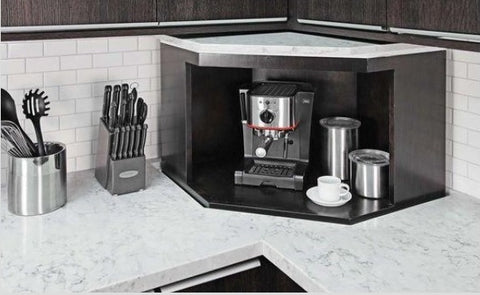
In scenarios demanding synchronized operation and higher load capacity, such as larger furniture applications, dual actuators could be required to run in tandem. For this purpose, the FIRGELLI FCB-1 Control Box can be used to ensure uniform, smooth motion. This controller works with all FIRGELLI Actuators that have a built-in feedback system.
Actuators for Adjustable beds
The adjustable beds in our homes and offices are yet another example of furniture where FIRGELLI actuators are used. These beds are designed with built-in furniture actuators adjusting the bed into different positions and configurations according to the user's preferences. FIRGELLI's FA-U electric actuator is a game-changer in this realm due to its compact and lightweight design, offering high power and an unbeatable size, weight, and power ratio. The FA-U is also equipped with Hall sensors for positional feedback and precise adjustments, making it the perfect solution for optimizing domestic equipment.
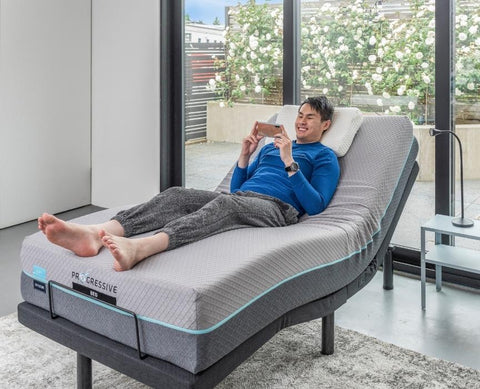
Actuators used for Standing desks
Standing desks, which are gaining popularity for home and office use, also make good use of actuators. They adopt a more active work style and reduce bad posture by allowing height adjustability. The FA-U electric actuator is fitting for this application, providing fast, quiet, and smooth adjustment of the desk's height.
Actuators for armchairs
Innovations in furniture have not only enhanced the comfort but also the functionality, especially with the introduction of actuators in pieces like armchairs and home theater seats. For instance, Lazyboy armchairs have been at the forefront, incorporating actuators that automate the movement of the backrest and footrest. This automation provides an effortless transition from sitting upright to a full recline, allowing users to find their perfect position with the push of a button. Similarly, luxury home theater chairs often feature multiple actuators, enabling separate control of the reclining feature and the footrest extension. This dual-actuator system offers precise adjustment, ensuring an optimal viewing angle and unparalleled comfort. Having more actuators typically correlates with a broader range of configuration options, though it could also imply additional costs and maintenance considerations. The use of multiple actuators allows for tailored comfort, catering to individual preferences for posture and relaxation, essentially transforming the user's living space into a hub of customizable luxury.

In the future, we can expect to see actuators being applied in a wider variety of furniture pieces, continuously pushing the boundaries of comfort and convenience. So, it is evident that the integration of actuators in different types of furniture has revolutionized our living spaces by providing customizable comfort at our fingertips. So why settle for ordinary? Upgrade your furniture with cutting-edge technology and experience the ultimate in comfort and convenience. Actuators have undoubtedly transformed our homes into luxury havens, and with advancements in technology, the possibilities are endless.
Mobility Actuators
Actuators have also revolutionized accessibility for individuals with limited mobility. With the use of actuators, furniture can now be easily adjusted to meet different needs and provide support for those who require it. This has opened up a new realm of independence for many, allowing them to regain control over their environment. These adaptive solutions not only enable comfort but also enhance the quality of life, making everyday tasks less challenging. Whether it's adjusting the height of a desk or the angle of a chair, the seamless operation of actuators can make all the difference. As we look to the future, the integration of smart technology with actuators is likely to provide even more personalized settings, responding to voice commands or adapting automatically to the user's preferred positions, further revolutionizing the concept of accessibility in home furnishings. Moreover, the use of actuators in furniture has also led to a reduction in space usage, as adjustable pieces can serve multiple functions and eliminate the need for additional furniture items. This not only promotes efficient use of space but also contributes towards sustainable living by reducing unnecessary consumption. With these advancements, it's safe to say that the future of furniture lies in incorporating actuators, creating a more inclusive and sustainable living environment for all.
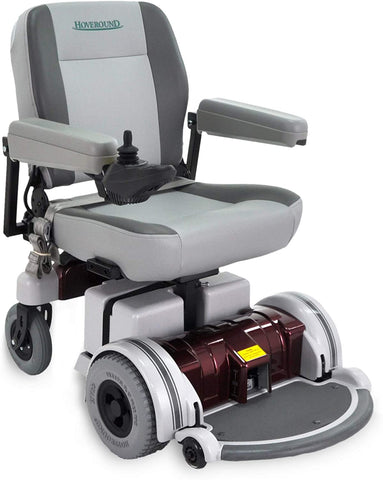
Actuators for Healthcare
Actuators have also made a significant impact in the healthcare industry, particularly in medical equipment. The use of actuators has enabled precise adjustments in hospital beds, wheelchairs, and other medical devices, providing patients with ease and comfort during their recovery process. The integration of actuators in healthcare has not only improved patient care but also enhanced the efficiency of medical professionals. With the ability to quickly adjust equipment settings, doctors and nurses can focus on providing quality care rather than spending time manually adjusting equipment. This has also led to a decrease in the risk of injuries for both patients and medical staff.
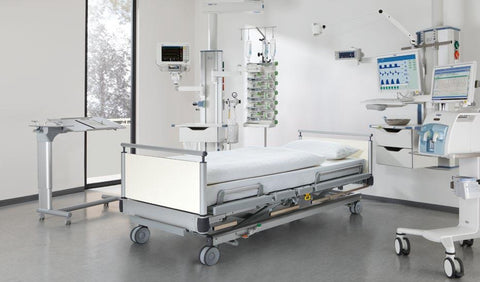
Automotive Actuators
Furthermore, actuators have also played a crucial role in the automotive industry. From power seats and adjustable steering wheels to power liftgates and automatic doors, actuators have enhanced the driving experience for many individuals. They have made it easier for people with disabilities or limited mobility to operate vehicles independently, promoting greater inclusivity and autonomy. Beyond simply ease and comfort, the application of actuators in vehicle automation is a testament to advancements in safety and efficiency, contributing to the development of self-driving technologies. As the automotive industry moves towards electric and autonomous vehicles, actuators play an essential role in various safety features, like emergency braking systems and active suspension systems, which adapt to road conditions in real time, ensuring a safer journey for all. Additionally, the use of actuators in industrial machinery and robotics has significantly increased efficiency and precision in production processes. With their ability to precisely control movement and apply force, actuators have reduced the need for human labor, leading to faster production times and higher quality products. In industries where accuracy is crucial, such as manufacturing or assembly lines, the integration of actuators has improved precision and consistency, resulting in higher quality products for consumers.

Medical field Actuators
In the medical field, actuators have also been used to develop innovative technologies such as prosthetics and exoskeletons, allowing individuals with physical disabilities to improve their mobility and independence. By mimicking human movement, these advanced devices enhance the user's range of motion and provide a more natural experience compared to traditional prosthetics. Actuators have also been used in medical devices such as insulin pumps and infusion pumps, providing precise control over the delivery of medication to patients. This has not only improved the accuracy and effectiveness of treatment but also reduced the burden on healthcare professionals, allowing them to focus on other critical tasks.
Future of furniture Actuators
As technology continues to advance, the potential applications of actuators are endless. From enhancing efficiency and safety in transportation to improving accuracy and precision in manufacturing, these devices play a crucial role in various industries. They also have the potential to revolutionize fields like medicine and robotics, providing new opportunities for innovation and improvement. Actuators will continue to enhance our lives in numerous ways, making tasks easier, safer, and more efficient. With ongoing advancements in technology, we can only imagine the endless possibilities that await us with the integration of actuators. So, whether it's in the medical field or everyday devices, the use of actuators will continue to shape and improve our world for years to come.

From automating industrial processes to improving healthcare and enhancing daily tasks, actuators have a significant impact on various aspects of our lives. As technology continues to evolve, so does the design and capabilities of actuators. With the integration of new materials and advanced control systems, these devices are becoming more versatile, efficient, and powerful. This opens up endless possibilities for their use in different industries and applications.
For example, with the rise of smart homes and Internet of Things (IoT) devices, there is a growing demand for actuators that can seamlessly integrate into domestic environments, enhancing home automation and making everyday appliances more interactive and responsive to user needs. From motorized blinds that adjust with the changing light conditions to smart locks that can be controlled remotely, actuators are at the heart of these innovations, providing the tangible, moving parts that respond to our digital commands. As we look to the future, the expansion of actuator technology in the home promises to make our living spaces not only more convenient but also more attuned to our preferences and habits.
Moreover, in the field of medicine and healthcare, actuators play a crucial role in improving patient care and treatment. From robotic surgical instruments that provide more precise incisions to prosthetic limbs that allow amputees to regain mobility, actuators are revolutionizing medical procedures and quality of life for patients. They offer a level of accuracy and control that is unmatched by other mechanical components, making them essential in delicate and critical operations. In addition, actuators are also being used in the development of assistive devices for individuals with disabilities, helping to improve their independence and overall quality of life.
But it's not just physical applications where actuators are making an impact. With the rise of virtual and augmented reality technologies, actuators are now being used to enhance our digital experiences. Haptic actuators, which simulate tactile sensations, are being incorporated into VR and AR devices to create a more immersive and realistic experience. This technology has potential applications in various industries, from gaming and entertainment to training simulations for professionals.
In the automotive industry, actuators are also playing a major role in the development of self-driving cars. These vehicles rely on actuators to control steering, braking, and acceleration, making them an essential component in the advancement of autonomous driving technology. With the potential to reduce human error and improve road safety, self-driving cars powered by advanced actuators could significantly transform transportation in the near future.
As we continue to push the boundaries of technological advancements, it's clear that actuators will play a crucial role in shaping the future of mobility. From enhancing medical procedures and improving quality of life for individuals to revolutionizing digital experiences and paving the way for self-driving cars, actuators are proving to be an indispensable component in our ever-evolving world of mobility. So whether we're moving through physical or virtual space, we can rest assured that actuators will be there, helping us navigate towards a better quality of life. And as technology continues to evolve, we can only imagine the endless possibilities that actuators will bring to our lives in the future. So buckle up and get ready for a thrilling ride into a world where mobility is powered by advanced actuators. Let's embrace this innovation and look forward to a brighter future ahead. Actuators have the potential to transform various industries, from gaming and entertainment to healthcare and transportation. With their ability to control movement and provide precision in a wide range of applications, actuators are paving the way for a more efficient and advanced future.
In the field of healthcare, actuators are being utilized in cutting-edge medical procedures such as robotic surgeries. These procedures allow for greater accuracy and control, reducing the risk of error and improving patient outcomes. Additionally, actuators are also used in prosthetics and exoskeletons, enabling individuals with physical disabilities to regain mobility and independence.
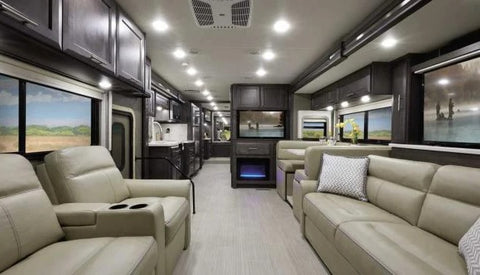
In the entertainment industry, actuators are being integrated into virtual reality systems, creating a more immersive experience for users. This technology has revolutionized gaming and is now being explored in other forms of entertainment such as theme parks and movie theaters.
In the transportation sector, actuators are playing a crucial role in the development of autonomous vehicles. With their ability to precisely control movement and provide feedback, actuators are essential for ensuring the safety and efficiency of self-driving cars. They also play a vital role in electric vehicles, helping to regulate battery levels and improve overall performance.